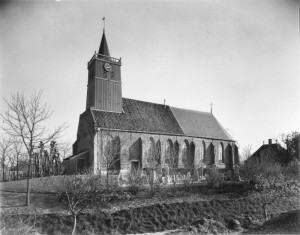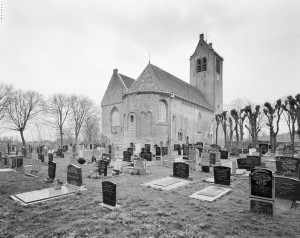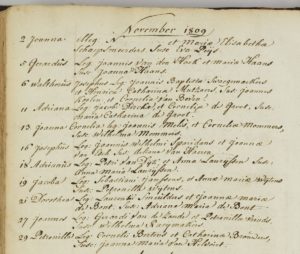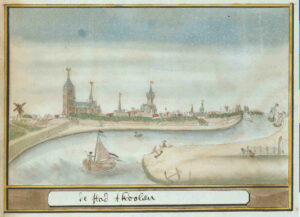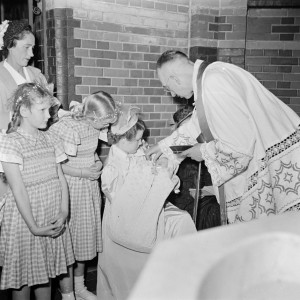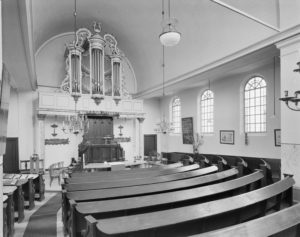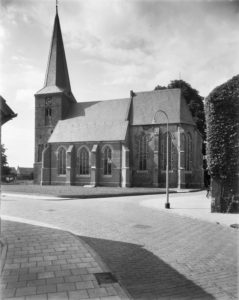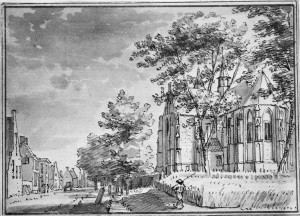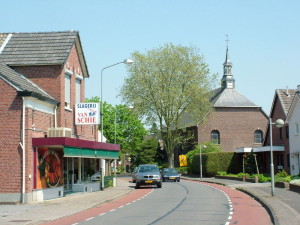Church membership records or lidmatenboeken record the members of a church. Church membership records are typically kept by protestant churches, like the Dutch Reformed Church. In the protestant faith, people become members by confession of faith as adults. This is different than in the Roman Catholic Church, that considers people as members from the moment of baptism, often in infancy. Structure of church membership records Church membership records are typically kept in chronological … [Read more...]
Ask Yvette – Where to Find Dutch Church Records After 1811?
TL read the tip that you should check church records after 1811 and wants to know where these records are kept, particularly for the province of Groningen. When the civil registration was introduced in 1811 (or slightly earlier in some parts of the Netherlands), churches were required to turn over their registers of baptisms, marriages, and burial to the government. There is no such requirement for later church records. Although churches are free to determine where to keep their records, … [Read more...]
Dutch term – DTB, DTBL
DTB is an abbreviation for Doop-, Trouw- en Begraafboeken [Baptismal, marriage, and burial books]. Sometimes, you see it as DTBL where the L stands for lidmaten [members]. You may come across the term in publications, finding aids, research guides, or source citations. Check this article for more Dutch genealogical abbreviations. … [Read more...]
Quick tip – Was that lost record transcribed or indexed?
Some parts of the Netherlands, especially Zeeland, suffered heavy record loss during World War II. Church records and court records may have been lost as a result. Most civil registration records survive, because duplicates were made of those at the time of creation, and both copies were in different locations. Before World War II, some people created transcriptions or indexes for their own use. These derivative sources may survive even if the original records were lost. Archives have been … [Read more...]
Quick tip – How to Find out Which Church Records Survive
Church records of baptisms, marriages, and burials are among the most popular genealogical sources to use. If you can't find a record, how do you know if the records don't exist anymore, or if you simply haven't found the person? In 1981, a book was published to help researchers, the Repertorium DTB. For each town, it lists the surviving records per denomination. Where to find the overview of Dutch church records The book is available online at the website of the Centraal Bureau voor … [Read more...]
Quick tip – Also Check Church Records After 1811
Church records of baptisms, marriages, and burials are the go-to sources for vital information before the introduction of the civil registration. After 1811, we usually don't bother since the civil registration records are often more reliable. But these church records can contain important information. When to check the church records Consulting as many records as you can about an ancestor is always a good idea, since you never know what you will find. There are certain situations when … [Read more...]
Quick tip – Parish versus Municipal Boundaries
The boundaries of a parish may be quite different from the boundaries of a municipality. A parish may be spread over multiple municipalities, or there may be multiple parishes in one municipality. Sometimes, churches in different villages formed one parish together, even though these villages may have been in different municipal jurisdictions. Even national or provincial boundaries did not always form the boundaries of a parish. Two examples illustrate this: The parish of the Dutch … [Read more...]
Source – Baptismal record
Before 1811, baptismal records are the main source for information about an ancestor's birth date. Baptismal records should have been kept since the Trente council of 1545-1563, but for most areas they only survive since the early to mid 1600s. Most children were baptized within days of being born. In some churches, children were baptized the next Sunday. Others baptized them the same day, or may have waited several weeks. Anabaptists and similar religious only baptized adults, so in that … [Read more...]
Quick tip – Did they go to church in Germany?
In the 17th and 18th century, after the Spanish rule ended, the Dutch Reformed church was the State Church. In most provinces, other religions like Roman Catholics were oppressed and forbidden to worship or hold public office. They would sometimes worship in churches that were hidden from view. On the other side of the border, things were different. For example, the landlord of Münster was also its bishop. He was greatly involved in the Contra-Reformation and founded chapels all along the … [Read more...]
Dutch term – Kerk
A kerk is a church. Before 1811, the records that the churches kept of baptisms, marriages and burials are the main sources for vital events. … [Read more...]
